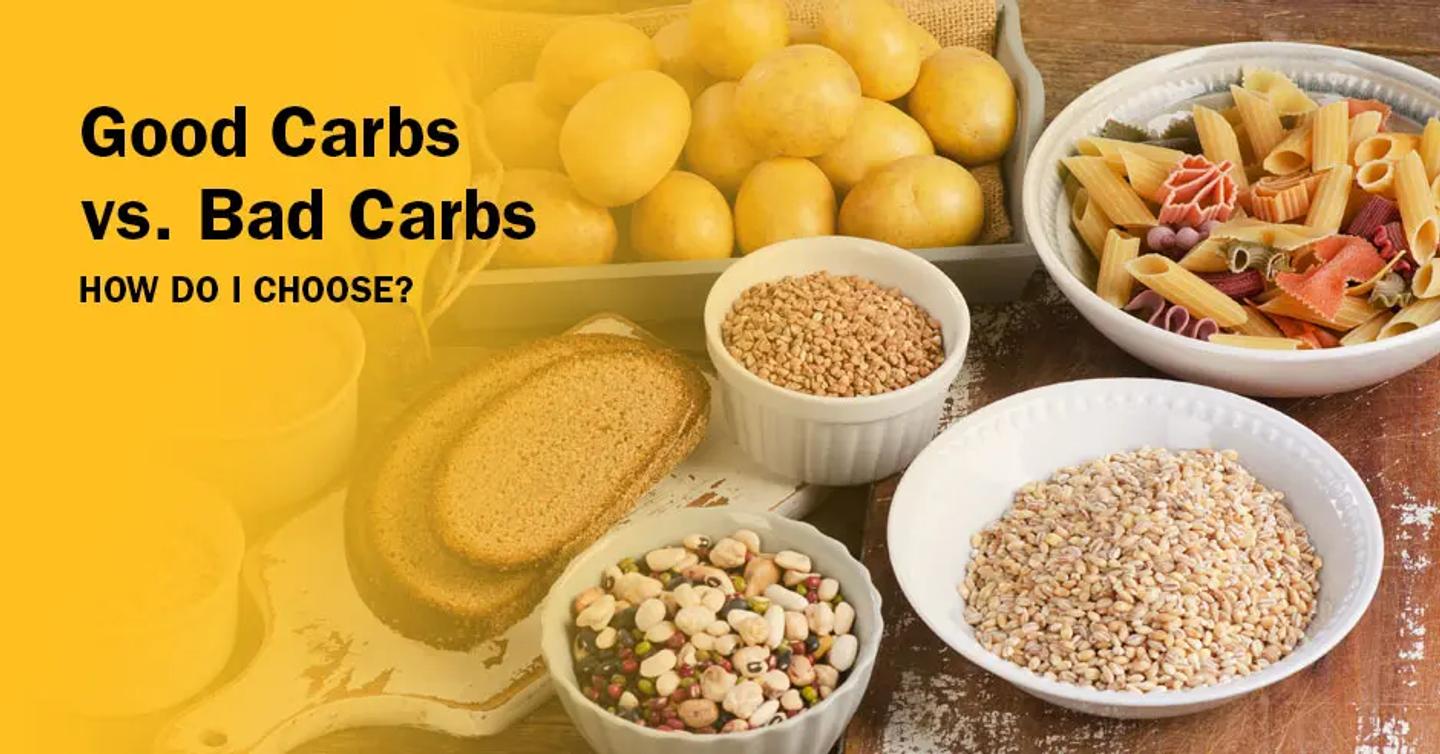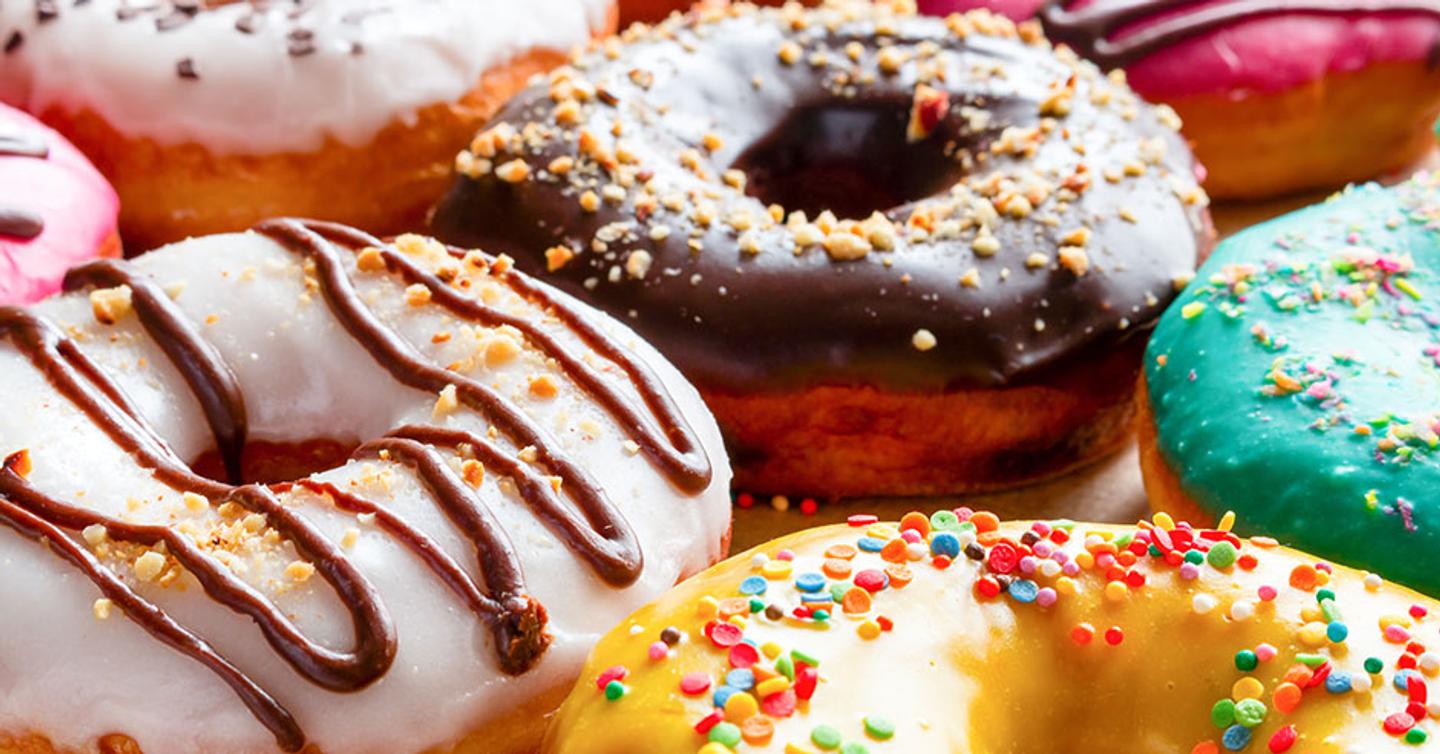
Good Carbs vs Bad Carbs – How Do I Choose?
Reading Time: 5 minutes 51 seconds
BY: ISSA
DATE: 2022-03-16
5 minutes 30 seconds
Carbohydrates are one of the three building blocks of a healthy diet, but knowing which ones to eat can be a little confusing.
No carbohydrate is actually bad, but certain high-carb foods are better for you than others. Know the difference between a so-called good and bad carb so you can make healthier choices and give clients good nutrition advice.
Why You Need Carbohydrates
Carbs have gotten a bad rap in the diet world for promoting weight gain. Carbohydrates are one of three essential macronutrients. Everyone needs to consume these three nutrients for optimal health and functioning.
Check out this guide for a thorough explanation of the three macronutrients: carbohydrates, protein, and fat.
What Are Carbohydrates?
Chemically speaking, a carbohydrate is a biomolecule made up of carbon, hydrogen, and oxygen. The basic unit of carbohydrates is a sugar, a small ring of carbon. Sugars link together to make complex carbohydrates.
In terms of food and nutrition, there are three main types of carbohydrates:
Sugar. This is the simplest type of carb. There are different kinds of sugar, either consisting of one or two sugar units. For instance, standard white sugar is sucrose and is made up of one unit of glucose and one unit of fructose.
Starch. Starch is a complex carbohydrate, a long chain of sugar molecules linked together.
Fiber. Fiber is another type of complex carbohydrate. The body doesn’t digest most fiber, making you feel full without providing calories.
Carbohydrates provide the primary source of energy for the body. You simply can’t operate without them. The body uses sugar for energy, but the digestive system breaks down complex carbs to get to those simpler units, so you do not need to consume sugar.
Why Is it Important to Discuss Good Carbs vs Bad Carbs?
While carbs are necessary in the diet, they’re not all the same. Some people object to the terms good and bad because there should be no value judgment placed on what you eat.
On the other hand, good vs bad provides a simple shorthand to understand the kinds of foods you should eat and those you should limit.
The so-called bad carbs cause blood sugar to spike and contribute to obesity and diabetes. The good carbs provide needed energy and have other health benefits. Many carb-rich foods provide important vitamins and minerals. The fiber in good carbs protects against cardiovascular disease.
Good Carbs vs Bad Carbs – What’s the Difference?
Carbs are not created equally. Some are better for you than others. The type is far more important than the total amount of carbs you eat per day. You can categorize nutritional carbs in a couple of different ways.
Simple vs Complex Carbohydrates
Simple carbohydrates are sugars, like glucose, sucrose, and fructose. They have relatively simple chemical structures and can be digested quickly to provide immediate energy.
Sugar, and foods high in sugar, provide quick energy. They also cause blood sugar to spike, which can be a problem. Studies show that when you eat a lot of foods rich in simple carbs, you are more likely to consume more calories later. That spike gives you energy right away, but then you crash and feel tired and hungry not long after.
In other words, eating too many simple carbs contributes to weight gain and all the potential health problems associated with being overweight or obese.
Complex carbohydrates include starch and fiber. They take more energy and time to digest and be converted to energy. For this reason, they do not spike blood sugar and are a longer-lasting source of energy.
Fiber does not directly provide energy. It supports healthy gut bacteria, which produce fatty acids from which you can get energy. Fiber is essential for good health, but it is not a calorie source. It helps you feel full and contributes to slowing down the absorption of sugar, minimizing blood sugar spikes.
Whole vs Unprocessed Carbs
Another way to look at good vs bad carbs is the degree of processing. Consider sugar as an example. Although it’s a simple carb, it isn’t necessarily bad. The sugar from a can of coke is bad for you because it is a large amount of sugar all at once without any other nutrients.
On the other hand, a banana is mostly sugar, but it also contains some complex carbs, like fiber. These additional carbs slow your body’s absorption of the sugar in the banana, so you don’t get the same blood sugar spike as you would with a highly-processed sugary food. A banana gives you sugar for quick energy and fiber, vitamins, and minerals.

The Good Carbs You Should Eat More Often
Good carbs are whole, minimally processed foods rich in complex carbohydrates. Examples include:
Whole grains, like oats, quinoa, barley, or brown rice
Whole grain pastas and breads
Legumes, like beans, lentils, and peas
Potatoes and sweet potatoes
Vegetables
Fruits
Some fruits are better than others when it comes to carb ratios and types. Grapes, for example, have a lot more sugar and less fiber than blueberries or raspberries. All whole, unsweetened fruits are still better for your health than processed carbs and sweets.

Bad Carbs to Limit or Avoid
Avoid or minimize carbohydrates from highly-processed foods or refined products. As an example, white rice is not highly-processed when compared to a saltine cracker, but it has been refined. That process has removed the germ and germ, the most nutritious part of rice.
Brown rice retains those components. The result is that brown rice has more fiber, vitamins, and minerals. It does not cause as much of a blood sugar spike as white rice, providing more lasting energy. White rice isn’t bad for you, but brown rice is healthier.
When making carbohydrate food choices, try to avoid overly-processed foods, refined grains, and foods rich in sugars instead of complex carbohydrates:
Sugary beverages, like pop or sweetened coffee and energy drinks
White grains, including white bread, pasta, and rice
Baked goods, like cookies, pastries, and rolls
Snack foods, like potato chips, pretzels, and crackers
Candy and desserts
Sugar can be tricky when choosing carbohydrates. People on low-carb diets often won’t even eat a piece of fruit because of the sugar. A more balanced approach to limiting sugar is to avoid foods with too much added sugar. This is the sugar added through processing.
Nutrition labels now include a line for added sugar. You can also read ingredient labels to find added sugar. Check things like bread, spaghetti sauce, and salad dressing. Processed foods like these are notorious for hidden sugars because they don’t seem like foods that would need the sweetness.
Using the Glycemic Index
A useful tool for choosing healthy carbs is the glycemic index (GI). The GI ranks foods from one to 100 based on how they impact blood sugar. Foods with a high GI rating cause a greater blood sugar spike. Everyone, especially people with diabetes, should avoid or limit high GI foods.
According to the creators of the glycemic index, low GI foods are best. Those with a ranking of 55 or less are associated with small changes in blood sugar, a lower risk of type 2 diabetes and heart disease, and maintaining a healthy weight.
If you have prediabetes or diabetes, you need to pay special attention to your blood sugar levels. These tips can help you manage blood sugar and keep it at safe levels.
Some examples of low GI foods are leafy green vegetables, lentils, sweet potato, and plain oats. Medium-GI foods include corn, whole grain bread, and sweeter fruits, like pineapple and banana. High-GI foods include white rice, white bread, soda, and potatoes.
Carbs are confusing, even for people with some knowledge of diet and nutrition. Help your clients make better food choices by staying informed about carbohydrates and other nutrients. They don’t have to avoid all so-called bad carbs, but opting for good carbs more often supports health and fitness.
Be prepared to answer all your clients’ food and diet questions with ISSA’s Certified Nutritionist program. With this certification, you can help existing clients and offer a new coaching service.
References
Ludwig, D., Majzoub, J., Al-Zahrani, A., Dallal, G., Blanco, I., & Roberts, S. (1999). High Glycemic Index Foods, Overeating, and Obesity. Pediatrics, 103(3), e26-e26. https://doi.org/10.1542/peds.103.3.e26
Glycemic Index. Glycemicindex.com. (2022). Retrieved 4 March 2022, from https://glycemicindex.com/about-gi/.